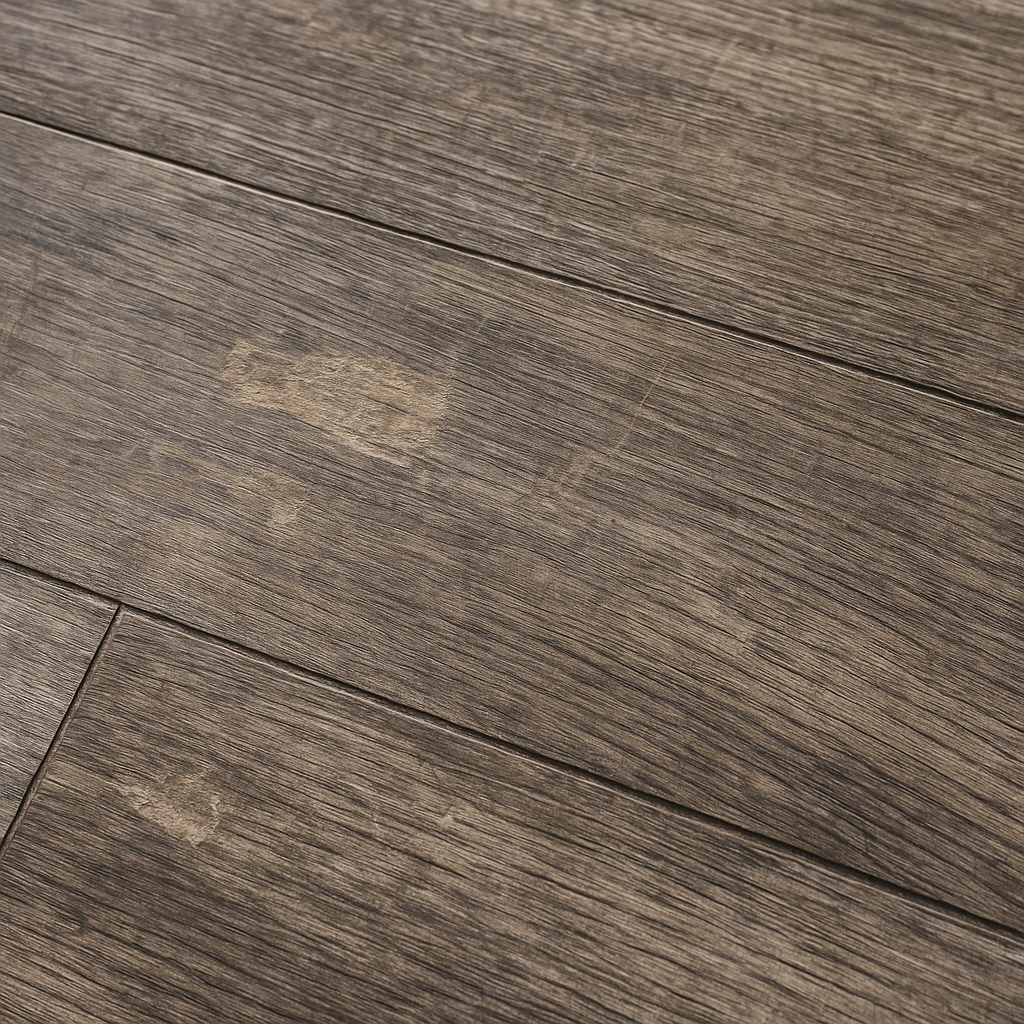Is LVP Any Good? Here’s the Truth From a Carpenter
Damaged LVP
You can’t grow an LVP tree.
LVP — Luxury Vinyl Plank — is a flooring material made from multiple layers of plastic pressed together under heat. Any design can be printed on it: wood grain, stone, tile, whatever the marketing department thinks will sell this year. It’s been sold as an affordable, DIY-friendly way to get a “beautiful” floor without hiring a professional. It looks good in the box, but once you live with it, you realize it’s just a picture of beauty printed on plastic.
I don’t know exactly why LVP was introduced to the market, but I’ve got a pretty good idea. Consumer culture made it necessary. The labor force that installs real flooring—the kind that requires patience, tools, and experience—is disappearing. And homeowners don’t think long-term anymore.
It’s a bit like career hopping: stay at a job for a couple of years, move on, and hope you find something better before it’s too late. LVP fits that same mindset. You don’t plan to live with it forever, you just want it to look good while you’re there.
So, is it any good? No. It’s garbage. It feels like plastic, smells like plastic, and—worst of all—looks like plastic. Ask anyone in the trades and they’ll tell you the same thing. People keep buying it because it’s marketed as “luxury,” but there’s nothing luxury about it. Once it cracks or the fake wood grain wears off, you rip it up, toss it in a landfill, and buy more plastic. Round and round we go. Think about how many plastic bottles it would take to make the flooring in your house. That alone should be enough to stop people from installing it.
The problems don’t end there. If you ever get moisture trapped underneath an LVP floor, say from a slab or a small leak, you’re in trouble. The whole thing has to come up to prevent mold growth. It’s also cold underfoot because it has zero R-value and it’s paper thin compared to almost any other flooring. Especially over concrete, it feels like standing on a refrigerator door. Online, you’ll see people recommend fixing that with area rugs. That’s like buying a cheap car and covering the dents with bumper stickers. Plastic feels cold. It’s in its nature.
It also doesn’t last. Once you install flooring in your home, that should be it. Who wants to rip it up every five or ten years? That’s nuts. But don’t worry—the plastic dust you breathed in while cutting it will be around long after you’ve replaced your “luxury” planks with next year’s rustic walnut faux-wood pattern.
If there’s anything nice to say about LVP, it’s that it’s cheap and easy to install. Congratulations—you’ve bought the least expensive flooring available. But even that’s changing. Thanks to its popularity, people now pay more for what’s essentially printed plastic. Some product lines don’t even require real tools. You score it with a razor blade, snap it, and click it together. No skill required. Who needs tradesmen anyway?
If you’ve already ordered your LVP, I’d tell you to send it back. Save your money a little longer. Put in tile or a quality engineered wood floor instead. Tile lasts nearly forever, and a good engineered floor can be refinished at least once down the road. LVP isn’t sustainable in any way—it’s bad for you, bad for the environment, and bad for the economy.
You can’t grow an LVP tree, and you can’t build a lasting home out of plastic.
If You Insist on Installing This Stuff...
Here are a couple of items I’ve used and actually recommend:
Utility Knife – Get a utility knife instead of a dedicated LVP knife. The utility knife has a lot more uses after the project’s over.
Utility Knife Blades – When the blade gets dull, recycle it. Grab a 50-pack and save yourself a few bucks.
Measuring Tape – This Stanley is just as good as any of the big names. A 16-footer is all you need for most DIY projects.
Some of the tools listed here are ones I personally use. When affiliate links are added later, they’ll help support this site at no extra cost to you.
My Ask
I’m not sponsored, and I don’t want to be. Everything you read here comes from my own experience — the good, the bad, and the occasional mistake. If you found this useful and want to help me keep building, you can “donate a nail” by using one of my links or chipping in a few bucks to support the site. Every bit helps keep this work going and lets me keep sharing what I’ve learned without having to answer to anyone but you.

